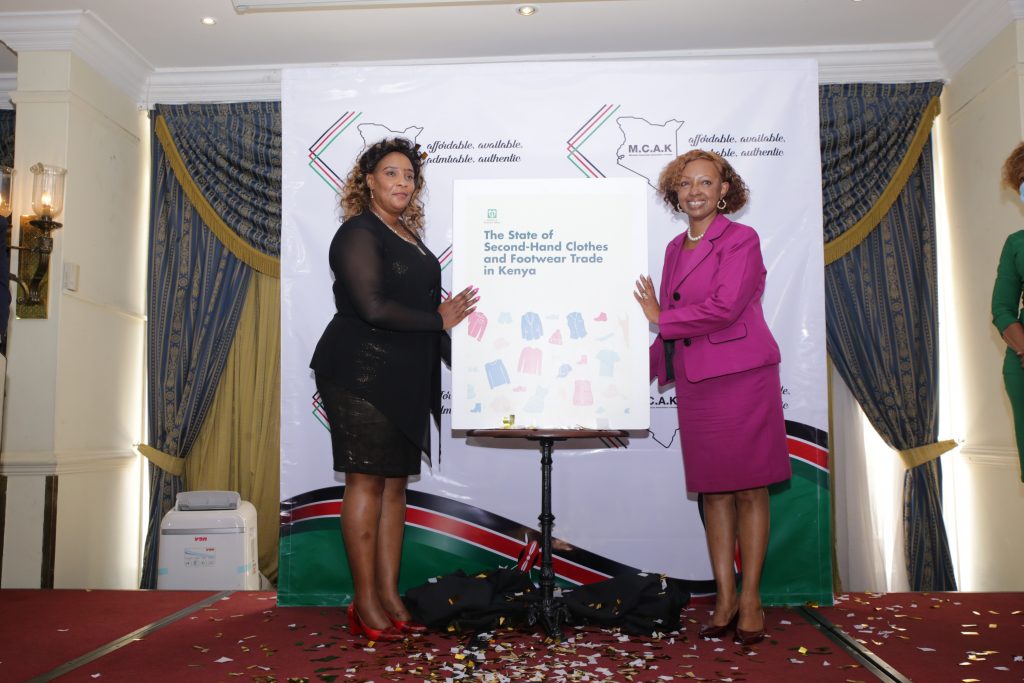The second-hand clothes sector in Kenya, better known as Mitumba, paid Ksh12 billion in taxes in 2019, and employs over 2 million people. A new report from the Institute of Economic Affairs (IEA) commissioned by the Mitumba Consortium Association of Kenya, offered numerous insights into the lucrative sector which continues to face threats despite its contribution to the economy.
The value of mitumba imports to Kenya has risen steadily in recent years, hitting Ksh18 billion in 2019 up from Ksh10 billion in 2015. Much of the 185,000 tonnes of second-hand clothing, equivalent to 8,000 containers, imported in 2019 found its way to markets and retailers across Kenya and East Africa, with Mitumba imported to Kenya subsequently exported to Uganda, Tanzania, Congo Brazzaville, DRC, Somalia and Lesotho.
The Mitumba consortium called for the formulation of policies to govern the sector in a bid to streamline it and secure livelihoods. The report delved into a long running debate on the impact of the second-hand clothing sector on the development of local textile industries, a debate which threatens the very existence of the sector.
It noted that among the Kenya Association of Manufacturers (KAM), for instance,
there were members who insist that the market for domestic apparel production is constrained by the availability of used imports.
It further observed that local designers had an incentive to reduce imports in order to direct purchases to themselves.
The report argued that the market for new clothes and mitumba were completely different, and should thus be regulated separately.

“Given the second-hand clothes industry and formal textile industry are separate markets then players in those markets are not necessarily competing with each other. Analysis at household level shows the majority of households buy new clothes, such as uniforms, when they have no alternative.
“We have shown the definition and use of new purchases and second-hand clothes to be different, with separate value chains, different supply and demand curves and a big difference in price sensitivity. The product design (for new purchases) is intellectual property and limited to specific firms or individuals. This shows that the two are separate markets. The two markets must be regulated separately,” it read in part.
READ>>>>>KEBS Lifts Ban On Mitumba Importation
Proponents for dismantling of the mitumba sector have argued that it’s proliferation has held back the development of local industries, capacity-building and job opportunities. Kenya was among East African Community (EAC) member states who eventually backed out a 2015 agreement to phase out the importation of second-hand clothes and footwear to promote textile, apparel and leather industries in the region and instead focus on evolving domestic industries.
Kenya made the decision amid pressure from the United States, where much of the clothes come from, for EAC states not to phase out mitumba. Only Rwanda maintained its stance, proceeding to phase out the industry known locally as ‘chagua’.
The Mitumba association report, however, highlighted the opportunity for co-existence of the formal textile industry and the mitumba sector.
“The incomes in developing economies such as Kenya do not allow for its citizens to afford new clothes purchases. Already, Kenyans are hybrid consumers of apparels, consuming both new and second-hand clothes. In line with SDG 12, both industries should be regulated differently,” it emphasized.
The report drew on the history of the sector, observing the increased product complexity that followed liberalization of the industry in the 1990s. Second hand clothes were previously entirely associated with aid organizations.
“The traditional definition of the used clothing industry is the re-appropriation of pre-worn clothes and accessories. However, much has happened since the liberalization of the mitumba industry in the early 1990s.
“The industry has evolved and expanded in terms of the use of second-hand clothes and the complexity of the product,” it noted.
READ>>>>>Mitumba Traders: We are at Tipping Point












Leave a comment